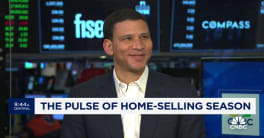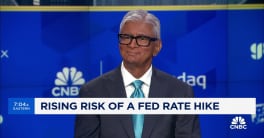The US dollar continues to weaken after a pause on Monday, boosting appetite for dollar-denominated commodities and pushing share prices up. Crude oil halted a three-day decline and gained $1.34 to $71.05, with gold and silver following suit.
Approaching Noon in Tuesday’s session, all three major indexes are climbing enough to reverse any declines from Monday’s directionless session. The S&P 500 has risen 0.57% to 1,070.61, putting the benchmark index less than 2 points from the 11-month high hit last week. The Nasdaq is up 0.33% to 2,145 and the Dow is up 0.36% to 9,814.
“More than anything else, we are seeing a reaction to the incredible weakness of the dollar,” said Addison Armstrong of Tradition Energy, to Bloomberg News. “Yesterday, the dollar strengthened and oil fell more than $2. Now the dollar’s plunged to the lowest level against the euro in a year and look what’s happened.”
The US dollar has lost 0.79% to the Euro this morning, allowing the latter to hit a fresh high for 2009. The dollar is also down 1.11% compared to the Sterling, 1.08% compared to the Yen, and 0.79% compared to the Canadian Dollar.
Data this morning has been slow. A government agency said home prices were stabilizing, two weekly retail surveys showed sales slowing down in the third week of September, and a regional manufacturing survey from the Richmond Fed was in positive territory for the fifth straight month.
Heading into the afternoon, fixed income markets will be key as the Treasury holds a $43 billion auction for 2-Year Notes at 1:00 EDT. Despite the rise in equities this morning ― indeed, over the past six months ― appetite for bonds hasn’t waned. The benchmark 10-year yield has moved down four basis points to 3.46%, while the 2-year yield is also down four basis points to 0.95%.
Data Recap:
The Redbook Retail Sales Index posted a 0.3% climb last week, beating forecasts for a decline and posting its third consecutive gain, but failing the match the prior week’s climb. A similar report from the ICSC & Goldman Sachs slid 2% from the previous week, slowing the one-year gain to 0.6% from +1.2%.
Economists from Nomura Global Economics noted that back-t0-back positive 52-week readings haven’t been seen since early July. But together, the two reports paint a retail picture with mixed colors.
“The uneven sales performance over the past several weeks highlights the uncertainty that seems to be dominating consumer behavior,” Nomura analysts said. “With a still weak job market limiting aggregate income, consumers are likely to remain even more price-conscious than they have become in recent years.”
In real estate news, the FHFA’s index of single-family homes rose 0.3% in July, half the pace expected by analysts. The previously reported 0.5% advance in June was also trimmed to just +0.1%.
Despite the revisions, the overall story hasn’t changed. July marks the third consecutive month that prices have gone up, meaning the median price bottomed out in April. Since its peak in April 2007, prices fell 11.5% over two years. Over the past 12 months, the index has slid 4.2%.
Looking forward, prices should remain firm. With credit tight and the unemployment rate at 9.7%, few are expecting the housing re-inflate any time soon. Indeed, if the government fails to stop the ongoing crisis of foreclosures, the decline in home prices could resume.
Lastly, the Richmond Fed’s manufacturing index continued to grow at a pace of +14 in September, led by gains from all components. Even the number of employees index posted its first gain since December 2007. This marks the third regional report to post relatively strong gains in September, suggesting the nationwide ISM survey should report positive figures when it is released the first week of October.







